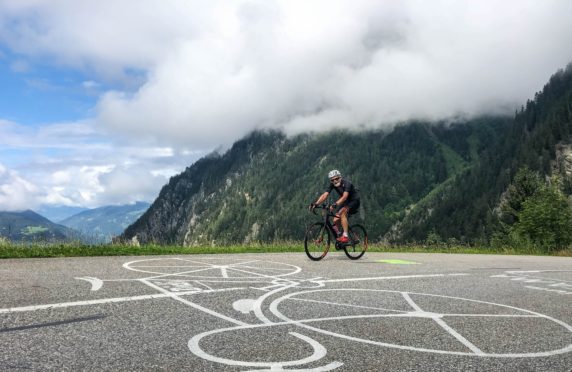Road cycling has an obsession with pedalling up mountains.
For me personally, that joy is greatly enhanced by the anticipation of a fast and swooping descent. But for many the joy of burning legs, sweat dripping in their eyes and lungs about to burst is enough of a lure.
Perhaps the challenge is part of the attraction; being able to push yourself to the limit on a climb that, for many, might seem like an impossible hurdle.
For those masochistic souls, it is the gradients of mountains of continental Europe that exert their magnetic pull. They look to emulate the professional warriors of the road by following their pedal strokes up the climbs in the Alps, the Picos, the Dolomites and the Pyrenees made famous by races such as the Tour de France and the Giro d’Italia.
Each of these climbs is graded as to its difficulty from Category 4 (easy, in relative terms) to Category 1 (difficult) to Hors Catégorie (HC – beyond categorisation – ouch!).
The categories are defined by the steepness and length of the climb. But how is this decided? Strava, for example, decides on the category of the climb based on the calculation of the length of the climb in metres multiplied by the average gradient of the climb.
This causes some problems as very few climbs have a consistent gradient, some have flat sections and some may even have short descents, all of which can mislead in determining the overall gradient of a climb.
An apocryphal story in the cycling world is that categorisation of climbs was first decided for the Tour de France using a Citroën 2CV. The lowest gear that the car had to change down to on the ascent would be the categorisation of that climb.
The climb would be awarded HC status if the 2CV failed to get up, or only managed it in reverse gear. It is a lovely story, but one that I have never been able to verify. I’ve spoken to locals in the French Alps and they shrug their shoulders and grunt “peut-être” – maybe. Perhaps the timeline offers a more reliable witness.
It was not until 1948 that the 2CV first went into production, falling in between the official designation of Category 2 climbs in 1947 and Category 3 climbs in 1949. As usual however, the myth and legend is far more attractive than the possible reality, so I won’t probe any further with that one.
1933 was the first year of the Tour de France “King of the Mountains” classification was introduced, and was won by the Spanish rider Vincente Trueba. That year it was Alfredo Binda who won the race overall, and Trueba who lost his advantage on each descent finished 6th overall.
It was 1905 when the first “official” climb, the Ballon d’Alsace was introduced to the Tour de France, although the Col de la Republique had been used in the Tours in 1903 and 1904.
In those days the riders pedalled up unsurfaced mule tracks on single-geared bikes with tubular tyres slung over their shoulders and Tour de France organiser Henri Desgrange, never one to shy away from hyperbole claimed that “no cyclist would be able to ride over…” the Ballon d’Alsace. They did, and on that day the legend of the “Grimpeur” (a climbing specialist) was born.
Since then the mountains have become shrouded in legendary stories, places where warriors battle. Races have been won and lost in them and riders have lost their lives racing on them.
We have given them names like The Circle of Death, that fearsome stage that includes ascents of the Tourmalet, the Peyresourde and the Aubisque. The fiercer they sound, the more fabulous the battles that are fought on their slopes the more cyclists want to go and ride on them.
They may be a place of pain and suffering, but for road cyclists they are also a place of pilgrimage and joy.











